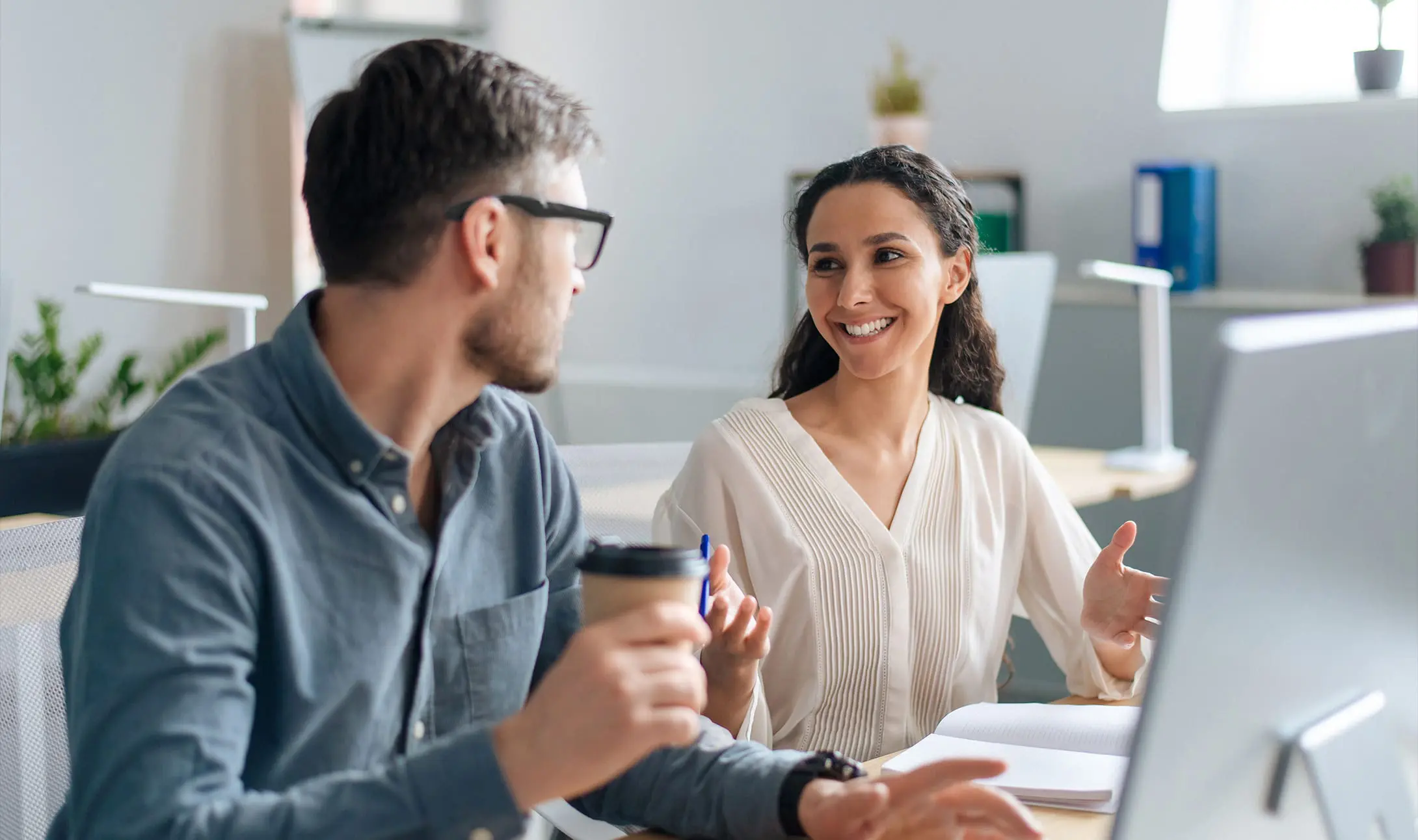Every employer and manager should strive to create a positive workplace environment. Part of this challenge is to set up a healthy feedback culture to foster employee growth and organizational success. Of course, you must ensure that the feedback is constructive and that everyone gets the most out of the process. Easier said than done? Read on to discover great tips to create a healthy feedback culture in your company!
What Is an Effective Feedback Culture?
First, a few words on continuous feedback and what it means for your organizational culture. Feedback culture in the workplace refers to attitudes and processes that encourage open business communication in order to collect, share and receive constructive feedback. The goal is to improve working practices and individual and organizational success while maintaining a positive workplace environment.

Tips to Promote Feedback Culture in Your Company
Without further ado, here are the main areas you will need to work on to implement effective feedback strategies in your company!
1. Set up open communication channels
First and foremost, you need to make sure that you have effective communication channels in place. Do all your employees benefit from the same level of communication, whether they are working in the office or remotely? Do they feel comfortable contacting their supervisor or team when they need to? Do they feel supported and encouraged to discuss potential issues or concerns?
Answering these questions is essential before building your feedback strategy. Remote communication tools, regular manager-employee conversations, and team meetings are crucial to open communication. Supportive and empathetic stances are also appreciated by your teams, improving employee morale.
2. Use the right feedback tools
Now that you have set up appropriate communication channels, it is time to implement feedback tools so that the entire organization can change their working habits. Of course, most feedback can be shared orally, but for it to be transparent and effective, you need to collect and centralize it on a single platform. Paper files won’t cut it: we recommend using employee surveys (which can help collect confidential feedback when needed) and engagement platforms to encourage workers to share their honest thoughts.
Most importantly, your teams need to know how to use these tools properly and also learn how to share constructive feedback.
3. Train and educate your teams on constructive feedback
Sharing regular feedback might sound like an easy shift, but you still need to make sure that everyone is on the same page. Peer feedback should never be a way to belittle coworkers and complain about interpersonal issues. Respect, transparency and timeliness are core values essential to any feedback strategy.
We recommend that you train and educate your teams on constructive feedback by organizing courses and meetings where everyone can learn about healthy feedback and start sharing their comments with peers. Furthermore, it is always a good idea to build a corporate guide on sharing feedback with coworkers so that rules and expectations are established. Every shift in workplace practices takes time and education before it can be fully implemented, so make sure that it goes smoothly for everyone!
4. Optimize performance management in your company
Effective performance feedback can only be implemented with efficient performance management practices. Here are a few tips to ensure that you are on the right track:
- Multiply performance conversations: If performance reviews are not a regular occurrence in your organization, consider brushing up your practices by organizing regular appraisals during which you can share performance feedback and identify areas of improvement. For a more modern approach to performance management, you can ask the reviewed employee to share ideas of changes they would like to see in management practices to support their productivity and growth.
- Track performance and productivity issues: Regular performance reviews will help you identify productivity issues before they get out of hand. Effective performance management software will allow you to track performance in a few clicks and monitor potential performance drops.
- Reward outstanding performance: Encouraging excellent performance in your company is essential. You can show appreciation for good performers during regular evaluations with phrases highlighting performance or by providing raises, promotions, and extensive learning opportunities.
Overall, employee performance management needs to be modernized to work seamlessly with your feedback strategy and become an integral part of your company culture.

5. Rely on 360-degree feedback
360-degree feedback is the best way to create a comprehensive feedback loop. This multi-rater feedback collects employees’ comments about their peers in order to collect information from different perspectives and obtain a more global view of performance in the company.
Of course, multiplying sources and types of feedback should be the main focus of your strategy; you also need to rely on upward feedback (coming from employees and directed to supervisors and management), and self-feedback (an employee’s self-evaluation of performance and motivation). This will ensure that you build a constructive and healthy communication mindset in your company.
6. Continuously foster constructive feedback
Even though your teams have been trained on constructive feedback techniques, a refresher is always welcome to ensure that your feedback practices are still healthy and effective. Creating a feedback culture is an ongoing strategy: remember to check on your teams and ask them their feelings on the feedback process and tips on how it could be improved. After all, their daily feedback should also be part of your feedback culture equation!
By involving everyone in the process and making sure that your practices remain effective in the long run, you will foster a constructive, transparent and timely culture of feedback that will support employee engagement and organizational success.
7. Lead by example
While peer feedback among team members is fantastic, you have to lead by example and encourage managers and team leaders to receive feedback about their own performance and practices. Your employees need to know that the process goes both ways and that they can share suggestions and criticism – or appreciation. All in all, promoting upward feedback is key to creating a comprehensive feedback loop. Managers who are open to feedback and suggestions will encourage their teams to follow suit and take an active part in the process.
8. Appreciate your employees’ contributions
Constructive criticism is great, but positive feedback is also paramount if you want to create a culture of feedback that fosters employee engagement and well-being in the workplace. After all, everyone loves compliments and kind words! Of course, you need to encourage kindness among team members, but you should also regularly express recognition for your employees’ contributions.
Highlighting outstanding performance, encouraging working efforts and appreciating smaller daily employee contributions is essential to build your employee recognition programs. Moreover, you can set up a communication channel dedicated to appreciation among coworkers, team members, managers and employees – everyone can and should be involved! Sharing and receiving positive feedback is a great mood booster and the pillar of a supportive workplace culture.
9. Create a supportive work environment
Feedback culture can only be healthy when it is implemented in a supportive work environment. So, if you still need to work on workplace issues that might hinder your corporate culture and feedback sharing, now is the time to do so!
Regular feedback can also be a great way to notice and solve interpersonal issues affecting workflow and morale. However, it might be challenging to collect honest feedback if your teams have ongoing trust issues with coworkers or managers. Make sure you unravel these problems before implementing your feedback strategies. Open communication needs to be set up beforehand, and you can improve your management practices to reconnect with your employees and improve your corporate culture. With the right mindset and healthy practices, you will succeed in creating a supportive work environment, one step at a time.
10) Promote ongoing learning opportunities
Now that you have set up your feedback strategy and worked on all the previous aspects we mentioned, you might be wondering what comes next. One of the greatest assets of your healthy feedback loop is that it will help you define highly relevant learning and training opportunities for your employees.
On top of supporting productivity and engagement levels, feedback should definitely be used to promote ongoing learning in the workplace. If you have noticed knowledge gaps or growth opportunities or discussed areas of improvement with your coworkers during feedback discussions, now is your chance to act on it.
By continuously setting up learning opportunities for managers and employees alike, you will ensure that your teams remain productive and engaged while increasing retention rates. Investing in workforce development is one of the best ways to improve your corporate culture while resolving numerous workplace issues!
Improving your corporate culture by adopting healthy feedback practices takes time and ongoing commitment. However, by prioritizing open communication, constructive feedback, and continuous learning, you will create a feedback culture that managers and employees embrace and use as a tool for growth and development throughout the organization. Moreover, feedback strategies will increase employee engagement and productivity. Of course, every action plan is simplified when you use the right tools. Above all, you need to implement performance appraisal solutions that will support constructive feedback sharing in your company.
Do you want to implement healthy feedback practices in your company?
Discover the best performance management software for SMBs!

